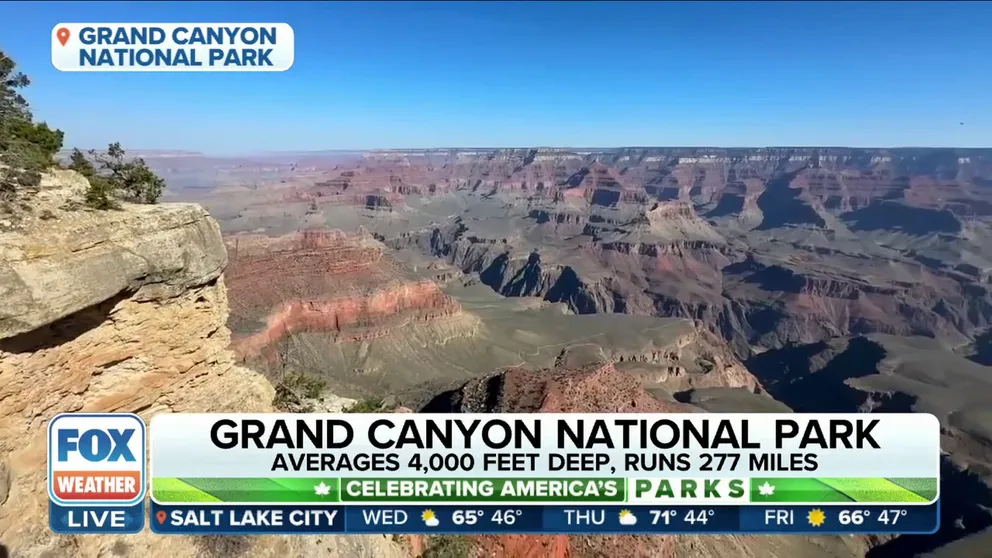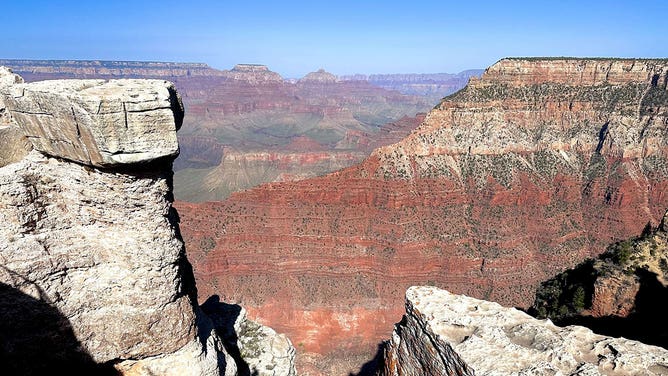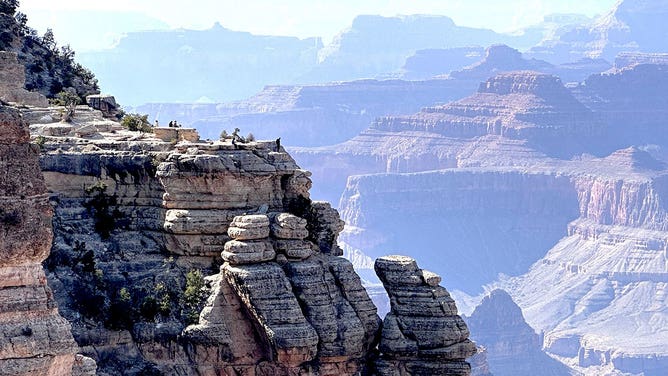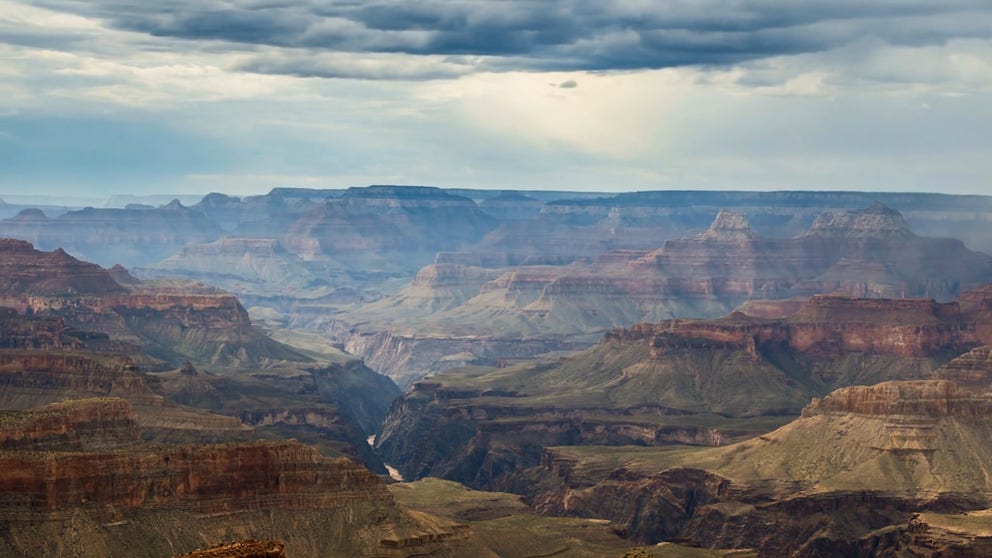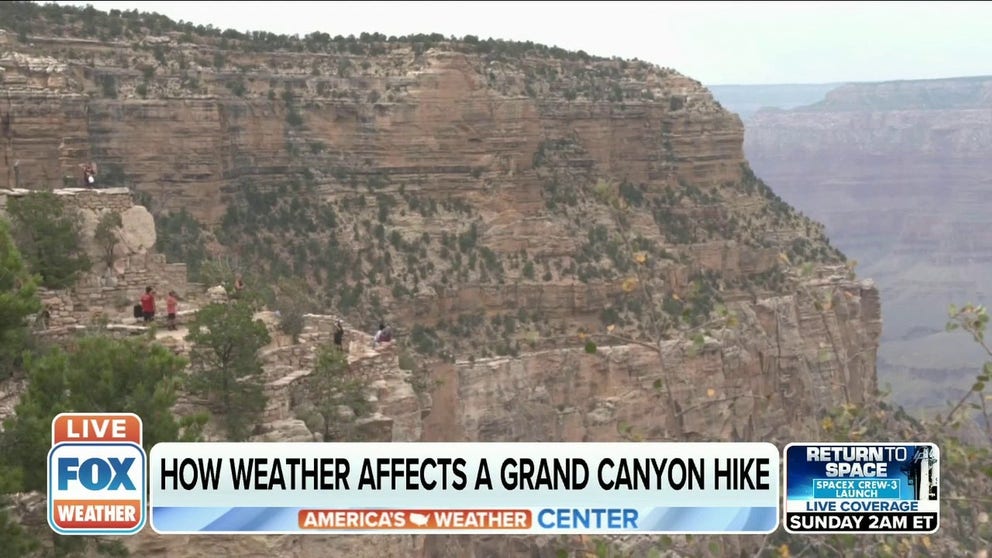Grand Canyon National Park offers 277 miles of breathtaking views and adrenaline-pumping hikes
Designated as a national park in 1919, nearly 6 million people from around the world visit the Grand Canyon every year, looking for a grand exploration of land that is constantly changing shape and color.
Exploring the diversity and beauty of Grand Canyon National Park
Grand Canyon National Park is considered one of the finest examples of arid-land erosion in the world. Incised by the Colorado River, the canyon is immense, averaging 4,000 feet deep for its entire 277 miles. FOX Weather's Robert Ray explores the diversity and beauty.
GRAND CANYON NATIONAL PARK, Ariz. – Grand Canyon National Park in Arizona is known for its unmatched views encompassing more than 250 miles of the Colorado River and is one of the most spectacular examples of erosion anywhere in the world.
The Grand Canyon is immense.
It averages 4,000 feet deep for its entire 277-mile length from east to west, with its deepest point recorded at 6,000 feet, and one section of the canyon is 18 miles wide.
INTENSE DAM RELEASE AIMS TO RESTORE PARTS OF THE COLORADO RIVER BASIN AROUND GRAND CANYON
"So, over the course of 1.2 billion years, the Grand Canyon has gone through a lot of transformation," said Joelle Baird, a park ranger at Grand Canyon National Park. "What we are standing on now was all a previous ancient sea, and that water has allowed the carving of what we see now as the canyon itself. And then, of course, erosional forces, whether water or wind."
At first sight, the human eye is mesmerized by the sheer size and formation of the rocks.
"I was astounded," said Grand Canyon National Park visitor Tina Johnson. "It almost brought tears to my eyes. This morning we got up for sunrise. It was just amazing."
HERE ARE THE MOST POPULAR NATIONAL PARKS FOR BIRDWATCHING THIS SPRING
Grand Canyon National Park
Grand Canyon National Park in Arizona features one of the Seven Natural Wonders of the World.
Looking over the edge, side to side, the urge to traverse takes hold. And then the importance of the national parks becomes apparent.
"These belong to the people of the country, and they really need to know what’s out there, what they can do, how to access them," Grand Canyon National Park ranger Ann Scott said. "Everybody has a right to be in their national park."
For visitors, Grand Canyon National Park reveals several major ecosystems. Its great biological diversity can be attributed to the presence of five of the seven life zones in North America. The Colorado River is the lifeline of the Grand Canyon.
THESE ARE THE DAYS NATIONAL PARKS WILL HAVE FREE ADMISSION IN 2023
How the weather can affect a Grand Canyon hike
How the weather can affect a Grand Canyon hike.
"Where we are standing right now is at 7,000 feet in elevation; the Colorado River is at roughly 2,500 feet," Baird said. "So, we have 5,000 vertical feet in elevation and rich biodiversity."
Grand Canyon National Park also serves as an ecological refuge, with relatively undisturbed remnants of dwindling ecosystems of over 1,500 plant species, hundreds of bird types and 89 mammals.
"You have a repairing ecosystem and a lot of rich wildlife as well," Baird added. "Water really is the lifeblood that sustains a lot."
For those hiking the miles of rugged trails – preparation is key.
"You need things. You need things like water and Gatorade and other items in your backpack," FOX Weather correspondent Robert Ray said. "You’ve got to stay hydrated, and you’re going to run into potentially wildlife out there – bighorn sheep. Hopefully not snakes."
Designated as a national park in 1919, nearly 6 million people from around the world visit the Grand Canyon every year, looking for a grand exploration of land that is constantly changing shape and color.
